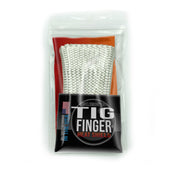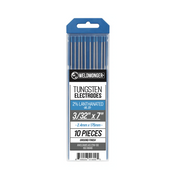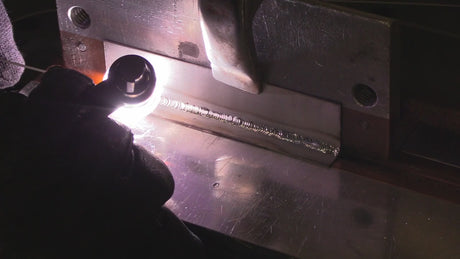Let’s break down what the Arc Control setting—also known as Arc Force or Dig—does on a stick welding (SMAW) machine and how to use it effectively.
What Is Arc Control / Arc Force / Dig?
When Arc length gets short, the rod has a tendency to stick.
maybe that is why they call it "Stick Welding"
Some machines have a setting that senses this drop in voltage and automatically bumps up amperage while the arc is short.
Arc Control, sometimes labeled as Arc Force or Dig, is a feature found on many stick welding machines (especially inverter and multi-process machines). It controls how much extra amperage is automatically added when the arc length gets very short—like when the electrode is close to the puddle or nearly touching the base metal.
Think of it as a "boost" to help prevent the rod from sticking when you dip too close.
- When you're welding and the arc length shortens (like during tight arc or deep keyhole welding), the voltage drops.
- Arc Control responds by momentarily increasing the amperage to prevent the rod from sticking and keep the arc alive.
- This extra amperage helps maintain penetration and arc stability.
Without enough arc force:
- The rod can stick to the workpiece.
- The arc may sputter or go out during tight root passes.
- You may have difficulty running rods like 6010 that require a forceful arc.
With too much arc force:
- The arc becomes violent or harsh.
- You may blow out the puddle or create excess spatter.
- Welds may become too convex or erratic.
- Low Setting (0–20%): Soft arc, minimal digging. Good for thin metal or when a smooth bead is desired.
- Mid Setting (30–60%): Balanced arc. Great for most 7018 applications and general work.
- High Setting (70–100%): Aggressive arc for deep penetration, roots, and gap bridging. Best with 6010 or 6011.
How to Adjust arc control:
Start low and increase gradually until you get the arc performance you want.
✅ Pro Tips:
- On root passes with open gaps, increasing arc force helps keep the arc lit when you’re riding the keyhole.
- On fill or cap passes, too much arc force can make the arc harsh and unstable.
- It’s not a one-size-fits-all—tune it based on rod type, position, and base metal thickness.






